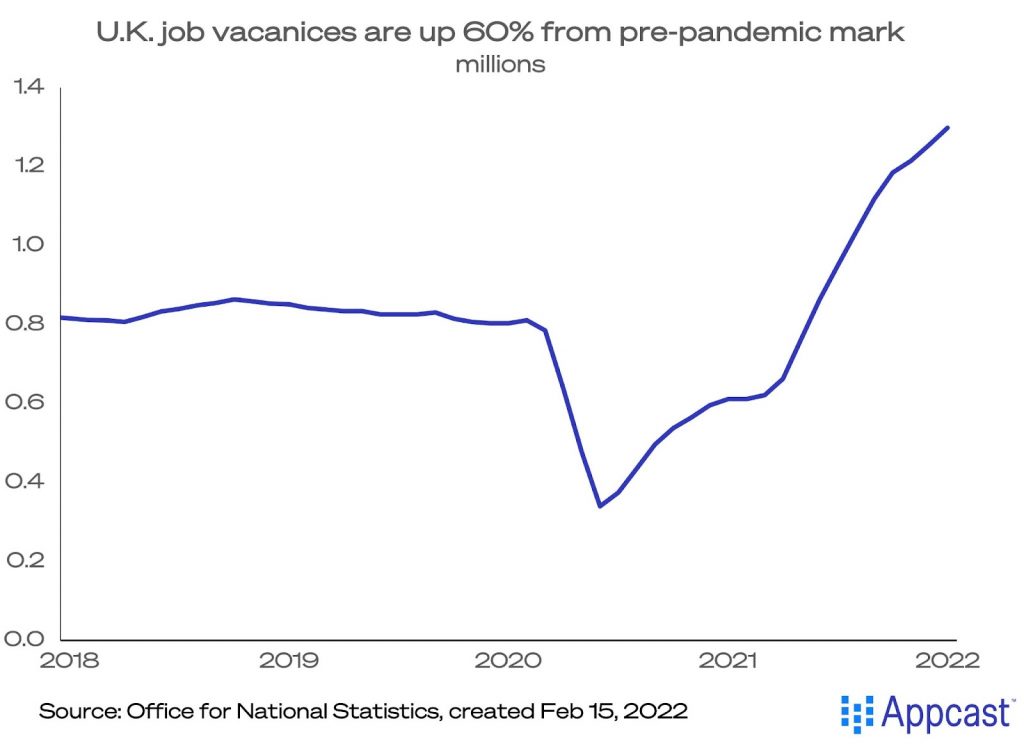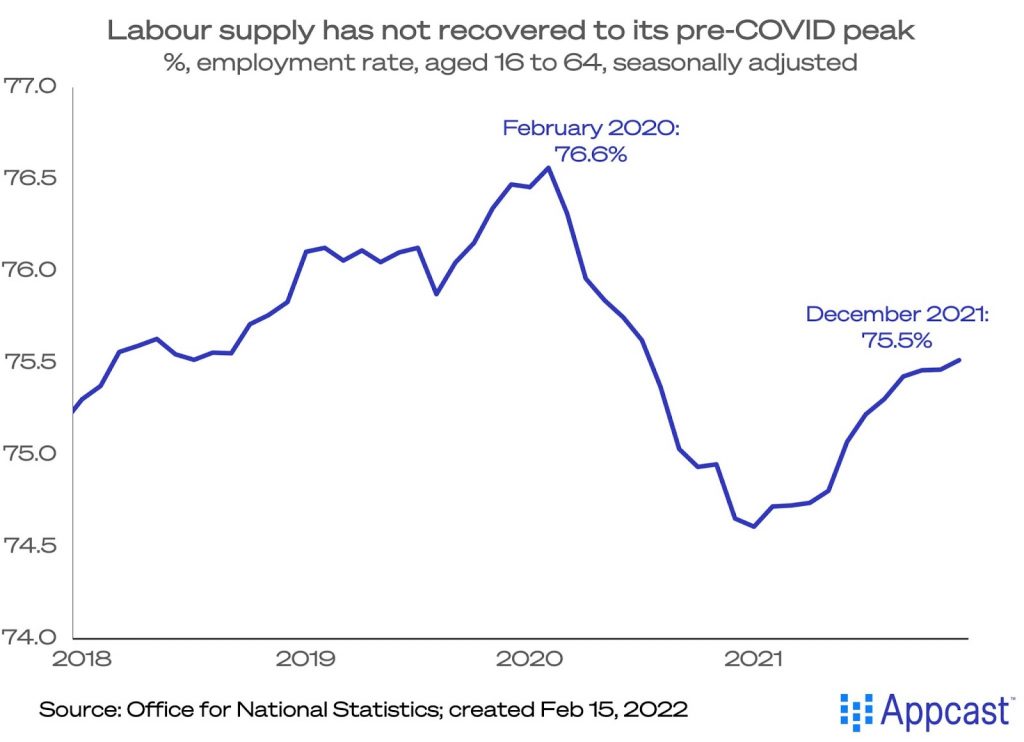The UK labour market remains a challenge for recruiting. Employers face stiff competition for workers amid labour shortages. Wages are rising briskly, but prices have risen even faster – exacerbating the cost of living difficulties faced by many.
As for the demand-side of the labour market, the latest Office for National Statistics (ONS) data indicate nearly 1.3 million job vacancies in the three-months through January 2022, that is up 60% from its pre-pandemic level. Vacancies are up for nearly all major industries. Employers in the UK report difficulties in acquiring talent across geographies and job functions.

As for the supply-side of the labour market, it’s a different story. A smaller share of 16-to 64-year olds are employed now than before the COVID recession. The employment rate improved to 75.5% in the three months through December 2021. That is still below the high-water mark of 76.6% before COVID hit. A key force behind the subdued labor supply rebound is the relatively high number of “economically inactive” people – those not actively searching for work, and so not in the labour force. That number is up over 400,000, to 8.8 million in December 2021.

Tony Wilson, of the Institute for Employment Studies, has detailed how historically tight the labour market is right now. The all-time high in vacancies amidst lackluster labour force participation has created a spike in wages. Average hourly earnings rose a robust 3.7% in Q4 2021, relative to the year before. But these nominal wage gains were more than wiped out by the inflation that is at a more than 30-year high in the UK. After adjusting for inflation, wages were down 0.8%.
The fundamental imbalance between supply and demand is likely to continue: the elevated number of “economically inactive” persons are more likely to cite health concerns, perhaps lingering effects from “long COVID,” for not actively searching for work. This perfect storm is making recruiting a challenge in the UK, and it’s unlikely to ease up for some time.
Check out our recent webinar video:Recruiting in a Challenging Labour Market








